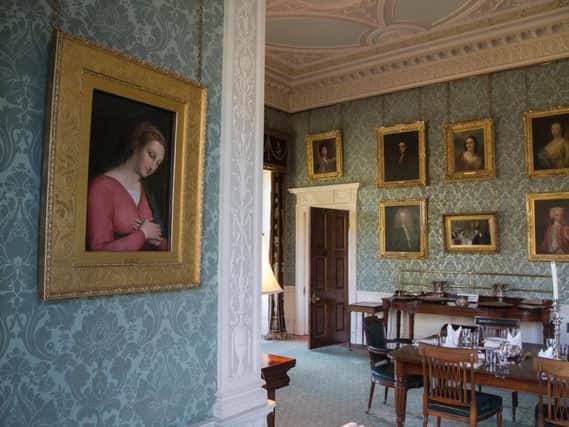Painting from Scots stately home ‘unlikely to be by Raphael’


Specialists were asked to investigate the Haddo Madonna, belonging to the National Trust for Scotland’s (NTS) Haddo House in Aberdeenshire, after it featured in the BBC’s Britain’s Lost Masterpieces in 2016.
In the programme, Dr Bendor Grosvenor suggested that the painting might be the work of the Italian artist Raffaello Sanzio da Urbino (1483-1520), better known as Raphael.
Advertisement
Hide AdAdvertisement
Hide AdThe National Gallery has concluded that the painting, although “very fine”, is not likely to be by Raphael, but may be an 18th-century Italian work by an unknown artist.
Mystery now surrounds who painted the picture because some art historians think that the Haddo Madonna might be a 16th-century work, but perhaps not by Raphael, whereas others suggest it may be by an artist of the Bolognese School, which was strongly influenced by Raphael.
Jennifer Melville, NTS head of curatorial and conservation services, said: “In trying to prove a theory, we have instead created a puzzle.
“While I agree the painting is probably not by Raphael, further research is needed – for example, to identify the wax seals that are on the back of the wooden panel and which may indicate a previous owner or be a clever piece of trickery.
“It will be fascinating to research the work’s provenance further, as the history of the picture’s ownership will add to our current understanding of this very fine painting.”
She added: “The decorative play of hands and arms, which is a distinctive feature of Raphael’s known Madonna and Child compositions and introduced a new tenderness and human element to these religious paintings, is absent here.
“This is a more formal ‘adoration’, as seen in the art of a slightly earlier generation, by such artists as Bellini, Botticelli and Raphael’s teacher, Perugino, and this may point us in fascinating directions as to where this painting really came from.”
It has now been returned to Haddo House.
Meanwhile drawings by Leonardo da Vinci underneath one of his most popular paintings were revealed yesterday. The National Gallery in London, which is preparing an “immersive exploration” of work by Leonardo, has undertaken scientific research into The Virgin of the Rocks.
Advertisement
Hide AdAdvertisement
Hide AdIt uncovered the artist’s initial designs for the angel and the infant Christ, with “significant differences to how they look in the finished painting”.
Experts spent months using imaging techniques on the abandoned composition.
“Both figures are positioned higher up in the drawing, while the angel, facing out, is looking down on the infant Christ with what appears to be a much tighter embrace,” the National Gallery said.
“Why Leonardo abandoned this first composition still remains a mystery.”